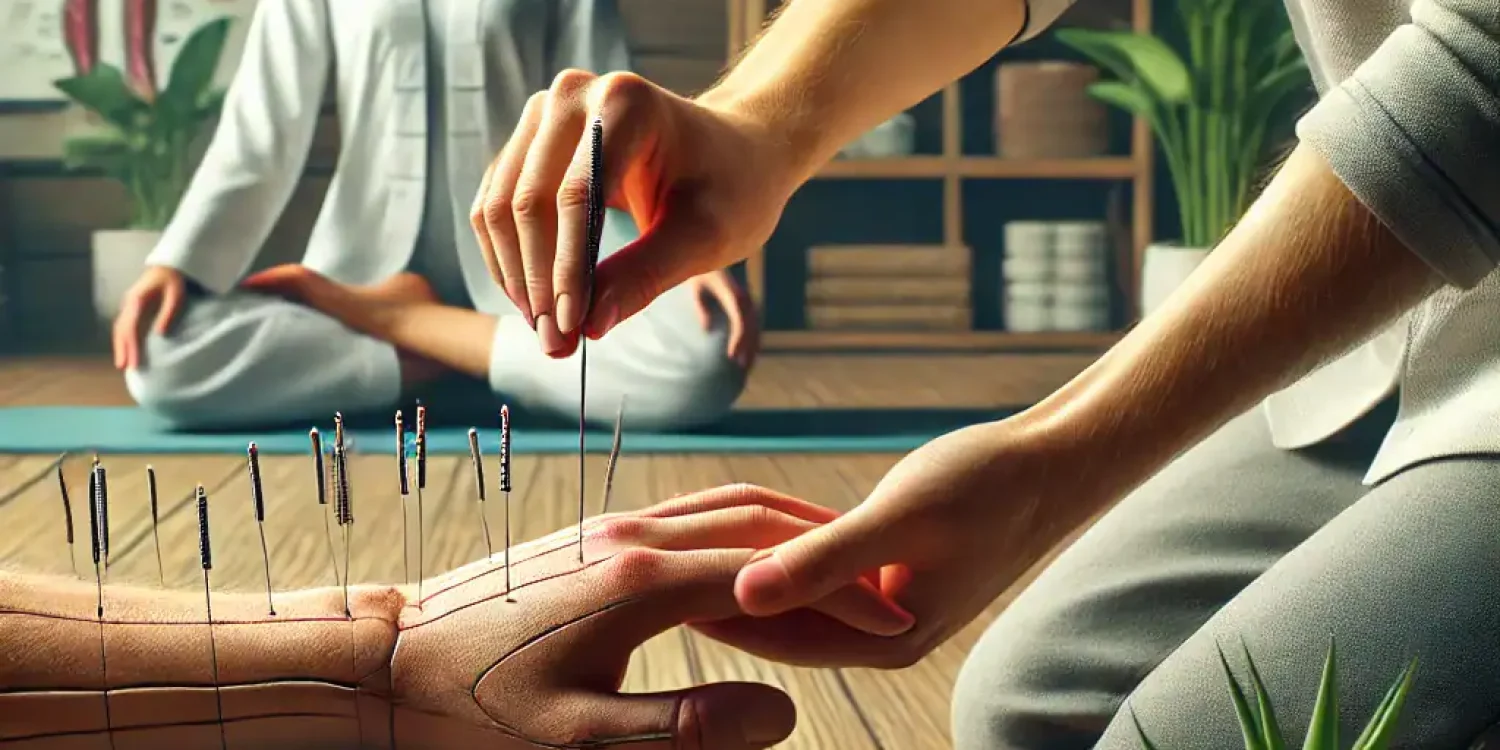Exploring Carpal Tunnel Syndrome: In-Depth Insights into Causes, Symptoms, and Effective Relief Strategies
Carpal Tunnel Syndrome (CTS) is a prevalent condition that occurs when the median nerve, which extends from your forearm into the palm of your hand, experiences compression at the wrist. This compression can manifest in various distressing symptoms, including pain, numbness, tingling sensations, and weakness in the hand and fingers. Many notice that these uncomfortable sensations intensify during repetitive wrist motions, such as typing on a keyboard or using a mouse. Understanding the specifics of CTS is vital for preventing and effectively managing the condition.
The origins of this condition are frequently linked to repetitive strain injuries, but several other factors—such as pregnancy, diabetes, and thyroid disorders—can also worsen symptoms. A comprehensive understanding of the underlying mechanisms contributing to CTS is crucial for effective management strategies. The carpal tunnel, which is a narrow passageway in the wrist, is surrounded by bones and ligaments that can become inflamed. When inflammation arises due to overuse or other conditions, it can lead to swelling that constricts this tunnel, exerting pressure on the median nerve. This pressure disrupts the normal functioning of the nerve, resulting in the hallmark symptoms of CTS. Early recognition of these symptoms can facilitate timely treatment, preventing further complications.
Essential Insights on Carpal Tunnel Syndrome Management
- Carpal Tunnel Syndrome results from the compression of the median nerve within the wrist, leading to discomfort, numbness, and weakness in the affected hand and arm.
- Complementary therapies such as acupuncture, chiropractic care, yoga, stretching, herbal remedies, and massage therapy can effectively alleviate symptoms of Median Nerve Compression.
- Acupuncture involves inserting fine needles into specific body points to relieve pain and enhance nerve function in individuals with Carpal Tunnel Syndrome.
- Chiropractic care focuses on spinal and joint adjustments, which can mitigate pressure on the median nerve and improve overall nerve function in the wrist and hand.
- Practising yoga and stretching exercises can enhance flexibility, alleviate muscle tension, and reduce symptoms associated with Median Nerve Compression.
 Exploring Effective Alternative Therapies for CTS Management
Exploring Effective Alternative Therapies for CTS Management
As you seek effective management strategies for Carpal Tunnel Syndrome, you may discover that alternative therapies provide significant relief without resorting to invasive procedures. These therapies address the root causes of your symptoms rather than merely masking them with pharmaceuticals. By enhancing circulation, reducing inflammation, and promoting overall nerve health, alternative treatments offer a holistic approach to managing your condition.
Among the various alternative therapies available, Acupuncture, chiropractic care, yoga, and massage therapy have proven particularly beneficial for alleviating wrist pain and numbness associated with CTS. Each modality brings unique advantages that can work harmoniously, creating a tailored treatment plan to meet your specific needs. By incorporating these therapies into your daily routine, you may experience substantial improvements in your symptoms and overall quality of life.
Harnessing Acupuncture's Benefits for Carpal Tunnel Syndrome Relief
Acupuncture is an ancient technique rooted in Traditional Chinese Medicine that involves the precise insertion of thin needles into designated points on the body. This practice aims to stimulate energy flow and foster healing, making it particularly effective for individuals grappling with Carpal Tunnel Syndrome. By targeting specific acupuncture points associated with the wrist and hand, practitioners can help diminish inflammation and enhance circulation in the affected areas.
Numerous studies have indicated that acupuncture can significantly improve symptoms related to CTS. This treatment promotes the release of endorphins, the body's natural pain-relieving chemicals, while also reducing muscle tension and improving blood flow to the median nerve, aiding in healing and minimising numbness. Many patients report experiencing immediate relief after just a handful of sessions, highlighting acupuncture as a valuable approach for managing wrist discomfort.
 Enhancing CTS Management through Chiropractic Care
Enhancing CTS Management through Chiropractic Care
Chiropractic care represents another potent alternative therapy for addressing Carpal Tunnel Syndrome effectively. Chiropractors specialise in the alignment of the musculoskeletal system, enabling them to identify and address underlying issues that contribute to your symptoms. By adjusting the spine and wrist, chiropractors can alleviate pressure on the median nerve and enhance overall function.
In addition to spinal adjustments, chiropractors may utilise soft tissue therapy and ergonomic assessments to help you modify daily activities that could exacerbate your condition. This comprehensive approach not only targets immediate symptoms but also works to prevent future occurrences of CTS. Collaborating with a chiropractor allows you to create a personalised treatment plan incorporating tailored exercises and stretches to strengthen your wrist and enhance flexibility.
Utilising Yoga and Stretching Techniques for CTS Relief
Integrating yoga and stretching into your daily routine can serve as an effective strategy for managing Median Nerve Compression. Yoga emphasises mindfulness and body awareness while promoting flexibility and strength. Specific yoga poses can effectively stretch and fortify the muscles in your wrists and hands, alleviating tension and enhancing circulation. Regular yoga improves physical well-being and fosters mental well-being through stress reduction and relaxation techniques.
Stress is known to exacerbate symptoms of CTS, making it essential to find effective ways to manage stress through mindfulness practices. Simple stretches targeting the wrists and forearms can be easily incorporated into your daily activities, providing immediate relief from discomfort and contributing to long-term health benefits.
 Exploring Herbal Remedies for Alleviating Carpal Tunnel Syndrome Symptoms
Exploring Herbal Remedies for Alleviating Carpal Tunnel Syndrome Symptoms
Herbal remedies have been used for centuries to alleviate ailments, including Carpal Tunnel Syndrome. Many herbs possess potent anti-inflammatory properties that can help reduce swelling around the median nerve, thereby relieving pain and discomfort. Notable examples of beneficial herbs include turmeric, ginger, and willow bark, which may contribute to managing symptoms associated with CTS.
Some herbal remedies can enhance circulation and support nerve health in addition to their anti-inflammatory effects. For instance, ginkgo biloba is recognised for improving blood flow, potentially alleviating the numbness often associated with CTS. Before adding any herbal remedies to your treatment regimen, it is crucial to consult with a healthcare professional to confirm their safety and suitability for your specific circumstances.
Massage Therapy as a Non-Invasive Solution for Carpal Tunnel Syndrome
Massage therapy is another highly effective, non-invasive treatment option for alleviating wrist pain and numbness associated with Carpal Tunnel Syndrome. By employing targeted manipulation of the muscles and soft tissues surrounding the wrist and forearm, massage can help relieve tension and boost circulation in the affected areas. This enhanced blood flow promotes healing and can significantly alleviate discomfort.
Regular massage sessions can also help break up adhesions in the muscles and fascia surrounding the carpal tunnel, further relieving pressure on the median nerve. Many individuals report that massage therapy provides immediate relief from their symptoms while contributing to long-term improvements in wrist function.
Incorporating massage into your self-care routine can be an effective tool for managing your Carpal Tunnel Syndrome effectively.
 Creating a Comprehensive Approach to Managing Carpal Tunnel Syndrome
Creating a Comprehensive Approach to Managing Carpal Tunnel Syndrome
Effectively managing Carpal Tunnel Syndrome often requires a multifaceted strategy that integrates various alternative therapies. By exploring multiple options, such as acupuncture, chiropractic care, yoga, herbal remedies, and massage therapy, you can craft a comprehensive treatment plan tailored to your individual needs. These therapies offer distinct benefits that synergise to alleviate pain, diminish inflammation, and bolster overall nerve health.
As you embark on this journey toward relief from wrist pain and numbness, remember that consistency is key.
Regular engagement with these therapies will help manage your current symptoms and empower you to take control of your health in the long term. By seamlessly integrating these alternative treatments into your daily life, you can significantly enhance your quality of life while effectively addressing the challenges posed by CTS.
Frequently Asked Questions about CTS
What is the nature of carpal tunnel syndrome?
Carpal tunnel syndrome is a medical condition characterised by numbness, tingling, and other distressing sensations in the hand and arm. This condition arises when the median nerve travels from the forearm into the palm and becomes compressed or squeezed at the wrist.
What types of alternative therapies are available for managing CTS?
Alternative therapies for managing carpal tunnel syndrome can include acupuncture, yoga, chiropractic care, massage therapy, and herbal remedies. These approaches aim to alleviate pain and enhance hand and wrist functionality.
How does acupuncture aid in the management of carpal tunnel syndrome?
Acupuncture involves inserting thin needles into specific points on the body to relieve pain and improve overall symptoms. It is thought to assist in managing CTS by reducing inflammation and promoting the body's innate healing processes.
Can yoga provide benefits for individuals with CTS?
Yoga can be highly beneficial for those suffering from carpal tunnel syndrome as it enhances flexibility, strength, and posture. Specific yoga poses and stretches can also help relieve symptoms and diminish hand and wrist discomfort.
Is chiropractic care an effective treatment for carpal tunnel syndrome?
Chiropractic care may prove effective for CTS as it aligns the spine and improves nerve function. Chiropractors can utilise spinal adjustments and other techniques to alleviate pressure on the median nerve and mitigate symptoms.
How does massage therapy assist individuals with CTS?
Massage therapy can alleviate carpal tunnel syndrome by reducing muscle tension, enhancing blood flow, and promoting relaxation. It can also help relieve pain and discomfort experienced in the hands and wrists.
Are there herbal remedies that can assist in managing carpal tunnel syndrome?
Certain herbal remedies, such as turmeric, ginger, and bromelain, are believed to possess anti-inflammatory properties that may help alleviate pain and inflammation associated with carpal tunnel syndrome. However, it is crucial to consult with a healthcare professional before using any herbal remedies.


























28 Comments
It’s enlightening to see such a thorough exploration of Carpal Tunnel Syndrome. Having experienced mild symptoms myself, I’ve come to appreciate just how interconnected this condition is with our daily activities, especially in our increasingly digital world. It’s fascinating to ponder how our reliance on technology has shaped not just our workplaces but also our physical health.
It’s fascinating to delve into Carpal Tunnel Syndrome (CTS) and the impact it has on so many people’s daily lives. As someone who has dealt with wrist pain for a while now, I can totally relate to the description of the symptoms you mentioned. I remember the first time I experienced that numbness and tingling in my fingertips—it was such a strange and unsettling feeling. At first, I brushed it off as an odd strain from my computer work, but as it persisted, I realized it was something more significant.
It’s an eye-opener, isn’t it? That moment when you realize your body has decided to audition for a horror movie with all those strange sensations creeping in. Numbness and tingling can feel like your fingers are trying to communicate through Morse code—very unsettling, indeed.
Thank you for sharing your experience! If you’re interested in exploring effective solutions for managing wrist pain and improving your daily comfort, check out this helpful resource.
https://mcrtherapies.co.uk/ig
It really is something else when your body starts sending those strange signals. The way numbness and tingling can sneak up on you feels like a rudimentary horror flick plot. I can relate—it’s unsettling when your own fingers start to feel like they have a mind of their own.
It’s great to hear about your experience with wrist pain and how it led you to realize the significance of what you were feeling. Those initial signs, like the numbness and tingling, can definitely be disconcerting, especially when we often chalk them up to strains from daily activities. It’s a reminder that our bodies communicate in ways that we sometimes overlook until symptoms become more persistent.
This is such a relevant topic, especially in our increasingly digital world. I’ve been dealing with mild symptoms of Carpal Tunnel Syndrome myself, likely due to long hours of typing for work and personal projects. It’s fascinating—and somewhat unsettling—to think that something so common can have such a significant impact on everyday tasks.
I hear you on that. It’s interesting how our modern work habits can bring on challenges like Carpal Tunnel Syndrome, often without us even realizing it until symptoms start popping up. Those endless hours of typing can sneak up on you, can’t they? It’s like our bodies have a way of sending subtle messages that we can easily brush off until they become harder to ignore.
“I’m glad you found this topic relevant! If you’re interested, I recently came across some helpful resources and tips for managing and preventing Carpal Tunnel Syndrome that might be useful for your situation.”
https://mcrtherapies.co.uk/ezi
You’ve touched on something really important about the modern work environment. It’s fascinating how we often get caught up in our tasks, and it’s easy to overlook the physical toll they can take on us. I’ve noticed that, especially with more people working from home nowadays, ergonomic setups sometimes take a backseat to convenience.
I completely relate to what you’re saying. It’s almost alarming how easy it is to ignore those early warning signs until they manifest into something more serious. The way our bodies communicate discomfort in subtle ways is quite fascinating and often overlooked, especially in a world that encourages us to push through pain for productivity’s sake.
Your exploration of Carpal Tunnel Syndrome highlights a crucial issue that many overlook, especially in our increasingly digital and tech-driven world. I’ve personally experienced the effects of CTS after long hours spent typing and using a mouse. It’s alarming how easily our daily habits can lead to such discomfort.
Your exploration of Carpal Tunnel Syndrome illuminates a topic that resonates with so many of us, especially in our increasingly digital world. I’ve had my own experiences with discomfort in my wrists and hands, and it truly reinforces how important it is to listen to our bodies. The repetitive motions we often engage in, whether through typing or even scrolling on our devices, can easily lead to these kinds of issues over time.
Your exploration of Carpal Tunnel Syndrome (CTS) highlights not only the physical toll it can take but also the broader implications for our increasingly technologic and sedentary lifestyles. In my experience, I have noticed similar symptoms developing after long hours spent at the computer, often compounded by poor ergonomics. This personal observation aligns with your mention of repetitive wrist motions leading to discomfort.
This post sheds light on a crucial yet often overlooked condition. I’ve personally encountered Carpal Tunnel Syndrome, which made me acutely aware of the impacts of our increasingly digital world. The repetitive motions of typing and using a mouse have indeed contributed to my symptoms. It’s fascinating how working conditions can play such a significant role in our health, especially with remote work becoming more prevalent.
It’s interesting how experiencing something like Carpal Tunnel Syndrome can shift our perspective on our daily habits, especially in a digital-first world. I’ve had my share of discomfort from long hours at the keyboard too, and it really makes you think about ergonomics in our workspaces—something many of us might overlook until it becomes a problem.
It’s so true—you don’t really grasp the importance of ergonomics until you start feeling the effects of hours spent hunched over a keyboard. I’ve had my own run-ins with discomfort from long days at my desk, and it really has changed how I approach my workspace. It forces you to rethink everything from chair height to monitor placement.
I really appreciate how you broke down the complexities of Carpal Tunnel Syndrome. Having dealt with it myself, I can relate to the frustration of experiencing that numbness and tingling, especially during long hours of typing. It’s interesting how many people associate CTS solely with repetitive strain—I’ve often found that lifestyle factors like stress and even posture while working play a huge role too.
The exploration of Carpal Tunnel Syndrome (CTS) in your post strikes a personal chord with me, as I’ve spent years working in an environment that demands constant computer use. The repetitive motions required by typing and using a mouse indeed make the wrist vulnerable, and it’s concerning to see how many people overlook the importance of preventive measures until they’re actually experiencing symptoms.
It’s really interesting how much our daily routines can affect our health, often in ways we don’t fully grasp until it’s too late. I can relate to your experience—spending long hours at a computer can easily turn into a recipe for discomfort. I’ve found that incorporating small ergonomic adjustments, like using a wrist rest or adjusting my chair height, has made a noticeable difference.
I appreciate the depth of insight you’ve provided into Carpal Tunnel Syndrome (CTS) and its multifaceted nature. It’s a condition that many people don’t fully understand until they experience it firsthand, and your exploration of its various causes and symptoms highlights the need for a comprehensive approach to management and prevention.
Ah, Carpal Tunnel Syndrome—nature’s little reminder that we shouldn’t ignore the hand we type with! I knew I was in trouble when I started feeling like a text-happy octopus while working from home. Who would’ve thought that binge-watching ‘The Office’ and simultaneously crafting witty email replies would come back to haunt me?
Your insights on Carpal Tunnel Syndrome resonate with many, including myself. I’ve experienced the persistent tingling and discomfort during my long hours at the computer, which really highlights the connection between our increasingly digital lifestyles and physical health.
It’s great to hear that my insights hit home for you. Carpal Tunnel Syndrome is such a prevalent issue, especially in our tech-driven world. The tingling and discomfort you’re feeling during those lengthy computer sessions aren’t just minor nuisances; they’re signals from our bodies that we can’t afford to ignore.
Ah, Carpal Tunnel Syndrome – or as I like to call it, my wrist’s way of throwing in the towel after too many Netflix marathons and snack breaks! It’s funny (and a tad alarming) how a little repetitive wrist motion can lead to such a diva of a condition. I’ve noticed that if I have a late-night typing spree, I’m basically one episode away from a full-on wrist revolt.
It’s fascinating how Carpal Tunnel Syndrome (CTS) has become increasingly relevant in our technology-driven world. I’ve personally found that the rise in remote work and extended screen time has led to more colleagues experiencing symptoms. It’s a reminder of how our modern lifestyles can impact our health in unexpected ways.
I can totally relate to the struggles of Carpal Tunnel Syndrome—I’ve been dealing with it myself, especially after spending long hours at my computer for work and play. It’s interesting how something as simple as repetitive motion can lead to such discomfort. I’ve started incorporating breaks and stretches into my routine, and I’ve even tried ergonomic wrist supports, which have helped a bit. I was shocked to learn how conditions like diabetes and pregnancy can worsen CTS; it really emphasizes the importance of a holistic approach to health. It makes me wonder, how many people out there are unaware that their daily habits could be contributing to this? Would love to hear if anyone else has found effective relief strategies!
Understanding Carpal Tunnel Syndrome really hits home for me, as I’ve dealt with similar symptoms after long hours at my computer for work. It’s fascinating how our modern lifestyles, particularly with all the time spent typing and using devices, can lead to such physical challenges. I’ve found that incorporating regular breaks and stretches into my routine has made a world of difference. It’s interesting to consider how awareness of CTS is evolving with our increasing reliance on technology. How do others manage the balance between productivity and their health? I’m curious to hear different strategies that have worked for people facing similar issues!
Thanks for diving into a topic that many people, including myself, can relate to. Carpal Tunnel Syndrome can be a real struggle, especially in our tech-centered lives. I remember when I first started experiencing those tingling sensations and hand weakness after long hours at the computer. It seemed like a minor annoyance at first, but it quickly became a persistent source of discomfort that affected everything from typing to even holding a coffee cup.
It’s interesting how those initial tingling sensations can easily transition from a minor annoyance to a major challenge. Many of us don’t realize how much our daily routines can impact our bodies until we start feeling the effects, especially with something like Carpal Tunnel Syndrome. The struggle often lies in balancing our tech-driven lives while finding ways to support our wrists and hands.
“I’m glad to hear that you found the article relatable! If you’re looking for practical tips and solutions to ease those symptoms, check out this helpful resource.”
https://mcrtherapies.co.uk/yt